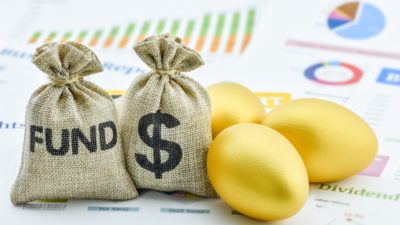It is not everyone’s goal to outperform the market. Still, given the choice, I believe investors would prefer to beat the market than not. Here are a couple of questions you can ask yourself to identify outperforming stocks.
Which sectors or industries are underperforming?
Identify underperforming sectors or industries. Then buy the top companies from the sector.
Here’s an example of how this have worked beautifully for the top Canadian banks, which are the most profitable publicly traded companies in Canada.
Bank stocks underperformed in 2015. Then in 2016, Royal Bank of Canada (TSX:RY)(NYSE:RY) shares rallied about 22%. The same thing happened to shares of Toronto-Dominion Bank (TSX:TD)(NYSE:TD).
Bank of Nova Scotia (TSX:BNS)(NYSE:BNS) shares were even more amazing, as they climbed a whopping 33%! (In 2015, Bank of Nova Scotia fell harder, allowing the shares to make a stronger comeback.)
So, never count out underperforming stocks. They can make an amazing comeback as long as the profits of their underlying businesses are still intact.

Which has higher growth?
When considering two companies in the same industry, the one with higher growth will likely outperform the one with lower growth, given that you pay a reasonable multiple for the higher-growth company.
Algonquin Power & Utilities Corp. (TSX:AQN)(NYSE:AQN) and Fortis Inc. (TSX:FTS)(NYSE:FTS) are both utilities. In comparison, the former has delivered higher returns as of late.
Algonquin’s one-year returns were about 24%, of which roughly 5% came from dividends and 19% came from capital appreciation.
Although, roughly a year ago, the utility was trading at a multiple of about 21.8, it was a reasonable multiple for its earnings-per-share (EPS) growth, which was 24% in 2016.
Fortis’s one-year returns were about 18%, of which roughly 4% came from dividends and 14% came from capital appreciation.
A year ago, the utility was trading at a multiple of about 17.5, which was reasonable for its stability and expected moderate growth of 5.75-7% per year for the next few years.
Since Algonquin’s EPS is expected to grow on average by about 11.5% per year for the next few years, the utility should continue to outperform Fortis as an investment.
The difference in compounded returns can add up to make a big difference — the longer you hold, the bigger the difference.
An investment of $10,000 with 12% annualized returns transforms to north of $33,000 in 10 years. If the same amount were invested for an 8% rate of return, it would have grown to only $22,200. That’s a $10,800 difference!
Investor takeaway
Every additional percentage of returns you earn from your portfolio will make a big difference in the long run. So, consider investing in tomorrow’s outperformers when they’re underperforming today!








